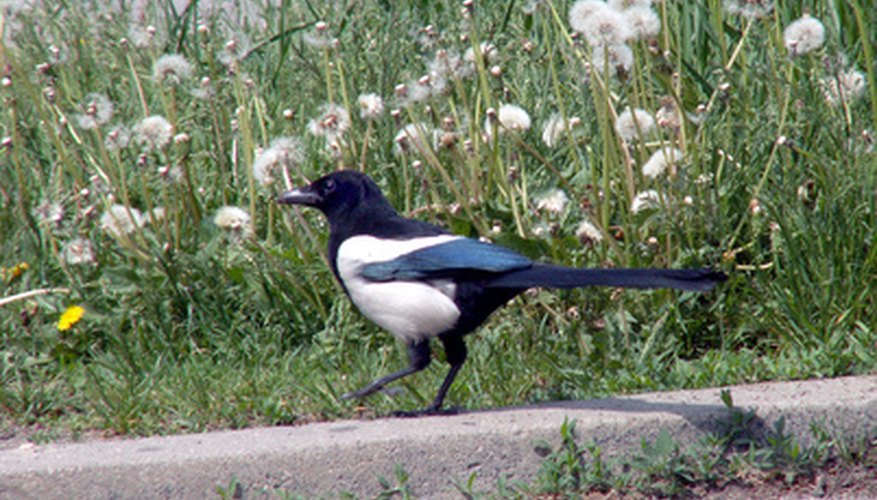The several kinds of magpies found in North America and Eurasia belong to the Family Corvidae, a collection of over 100 species of usually bold, intelligent and opportunistic birds including crows, ravens and jays. The most familiar magpies to Westerners are strikingly plumaged in black and white: the European magpie and two North American species, the black-billed and yellow-billed. With their bold colouration and extravagant slender tails, these birds certainly stand out in a landscape. Yet despite their visual outlandishness, discerning a black-and-white magpie's gender can be difficult.
Consider the slight physical differences between male and female magpies, especially if you have the opportunity to closely examine a dead specimen. From a visual standpoint, magpies are not strongly sexually dimorphic--that is, they do not display prominent physical differences. Citing papers by Birkhead (1991) and Lee et al. (2003), the University of Michigan's Animal Diversity Web reports that male black-billed magpies are some 10 per cent larger than females--but that would be a difficult distinction to use unless you could obtain the dimensions of a number of magpies in a given area.
- The several kinds of magpies found in North America and Eurasia belong to the Family Corvidae, a collection of over 100 species of usually bold, intelligent and opportunistic birds including crows, ravens and jays.
- 2003), the University of Michigan's Animal Diversity Web reports that male black-billed magpies are some 10 per cent larger than females--but that would be a difficult distinction to use unless you could obtain the dimensions of a number of magpies in a given area.
Dissect a dead magpie to look for the bird's gonads--a pair of testes in males, an ovary in females. Examining its skeletal remains, you can determine the presence or absence of the medullary bone, found only in females and used to produce eggshells.
Watch for courtship behaviour. According to the Animal Diversity Web, male black-billed magpies will display their wings and long tailfeathers directly at females during courtship. In response to female calls during this period, the male will also bring her food--a type of reproductive ritual called courtship feeding that is common in many kinds of birds.
- Dissect a dead magpie to look for the bird's gonads--a pair of testes in males, an ovary in females.
- According to the Animal Diversity Web, male black-billed magpies will display their wings and long tailfeathers directly at females during courtship.
Find a pair of breeding magpies--they often mate for life--and observe their nesting behaviour. According to the Animal Diversity Web, female black-billed magpies devote most of their energy at this stage to hollowing out a depression for their eggs, while males mostly build the protective nest-dome, often made of twigs and mud.
Watch for differences in foraging behaviour during nesting. In "Ornithology" (1995), Frank B. Gill relates a study that showed female yellow-billed magpies reduced the proportion of their day devoted to food-finding to less than two per cent while incubating egg clutches; during the egg-laying period, by contrast, females spent about 40 per cent of their day foraging. If you can find a magpie nest during the spring and early summer, the bird spending most of its time sitting inside is almost surely the female, while one encountered out foraging is probably the male.
